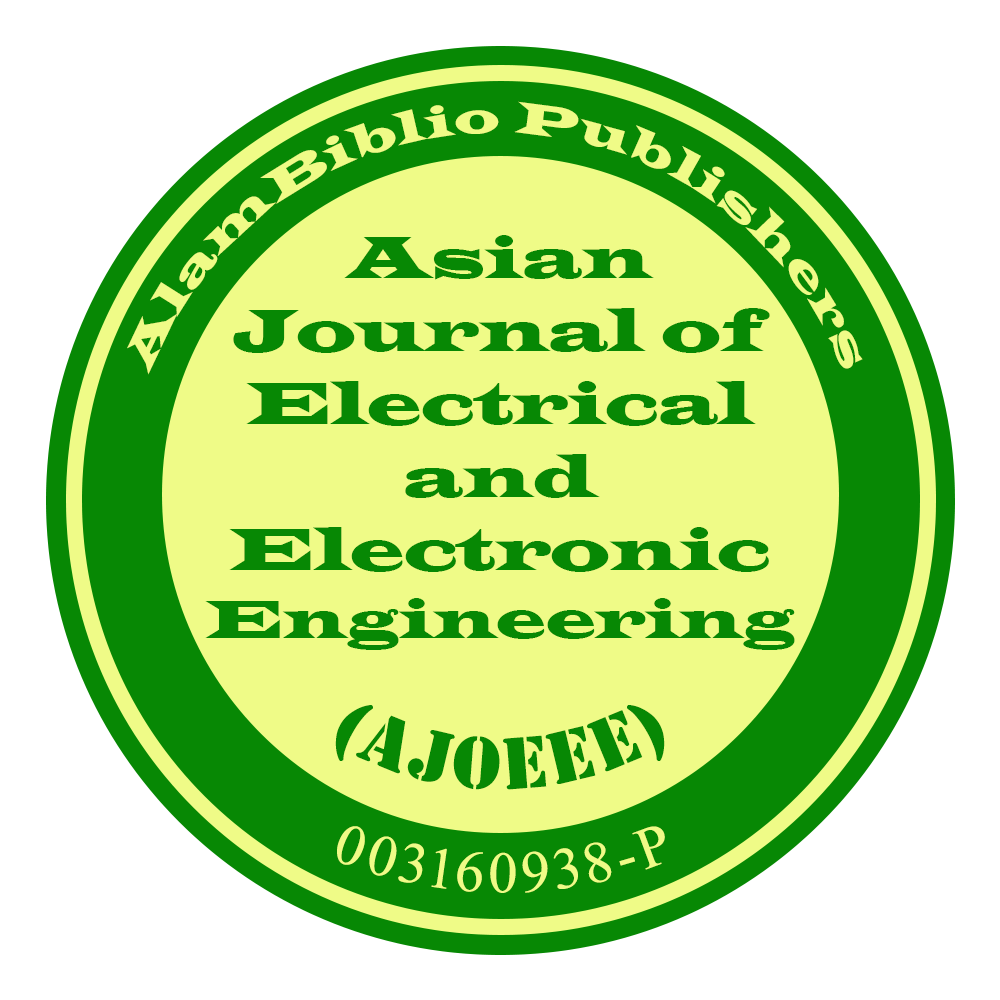Improving Crowd Counting Performance: A Convolutional Neural Network Approach with Transfer Learning
DOI:
https://doi.org/10.69955/ajoeee.24.v4i2.63Keywords:
Crowd Counting, VGG16, Enhanced Performance, Smart Cities, Public Safety, Convolutional Neural Networks (CNNs).Abstract
Precise crowd counting is critical to public safety and smart city planning since it solves the problems associated with the time-consuming manual counting of people in photos and videos. Transfer learning has become a key building block for improving crowd counting techniques, especially when used to Convolutional Neural Networks (CNNs). Because pretrained models already know the pertinent weights and architecture, using them in transfer learning minimizes computational demands and shortens training time. This paper presents a crowd counting method with an emphasis on optimizing the VGG16 model with a mall dataset. The results show that using VGG16 for transfer learning leads to higher performance when compared to more modern methods like AdaCrowd and PSSW models. In addition, the paper highlights how adaptable our proposed method is and how well it can transfer knowledge from one dataset to another.
Downloads
References
[1] C. Zhang, H. Li, X. Wang, and X. Yang, "Survey on crowd counting: Methods and datasets," Neurocomputing, vol. 399, pp. 67-89, 2020.
[2] A. B. Chan, Z. Q. Liang, and N. Vasconcelos, "Privacy preserving crowd monitoring: Counting people without people models or tracking," in European Conference on Computer Vision, 2008, pp. 412-425. https://doi.org/10.1109/CVPR.2008.4587569 DOI: https://doi.org/10.1109/CVPR.2008.4587569
[3] D. Wang, D. Zhang, Y. Chen, C. Zhang, and F. Yang, "Comprehensive study on convolutional neural network-based crowd counting methods," Neurocomputing, vol. 375, pp. 270-285, 2020.
[4] N. Liu, J. Zhang, K. Huang, and Z. He, "A Review on Deep Learning for Crowd Counting," IEEE Access, vol. 9, pp. 55801-55818, 2021.
[5] C. Zhang et al., "Data-driven crowd understanding: A baseline for a large-scale crowd dataset," IEEE Trans. Multimed., vol. 18, pp. 1048-1061, 2016. https://doi.org/10.1109/TMM.2016.2542585 DOI: https://doi.org/10.1109/TMM.2016.2542585
[6] V. A. Sindagi and V. M. Patel, "A survey of recent advances in CNN-based single image crowd counting and density estimation," Pattern recognition letters, vol. 107, pp. 3-16, 2018. https://doi.org/10.1016/j.patrec.2017.07.007 DOI: https://doi.org/10.1016/j.patrec.2017.07.007
[7] J. Pan, S. Liu, D. Sun, J. Yang, and C. C. Loy, "Crowd sampling the parameter space of deep neural networks for robustness," in Proceedings of the IEEE Conference on Computer Vision and Pattern Recognition, 2019, pp. 11205-11214.
[8] J. Deng et al., "Imagenet: A large-scale hierarchical image database," in 2009 IEEE conference on computer vision and pattern recognition, 2009, pp. 248-255. https://doi.org/10.1109/CVPR.2009.5206848 DOI: https://doi.org/10.1109/CVPR.2009.5206848
[9] K. He, X. Zhang, S. Ren, and J. Sun, "Deep residual learning for image recognition," in Proceedings of the IEEE conference on computer vision and pattern recognition, 2016, pp. 770-778. https://doi.org/10.1109/CVPR.2016.90 DOI: https://doi.org/10.1109/CVPR.2016.90
[10] X. Feng, X. Shi, and D. Yeung, "Spatiotemporal modeling for crowd counting in videos," in ICCV, 2017, pp. 5161-5169.
[11] A. Sam, S. Surya, and R. V. Babu, "Switching convolutional neural network for crowd counting," in Proceedings of the IEEE Conference on Computer Vision and Pattern Recognition, 2017. https://doi.org/10.1109/CVPR.2017.429 DOI: https://doi.org/10.1109/CVPR.2017.429
[12] V. A. Sindagi and V. M. Patel, "Generating high-quality crowd density maps using contextual pyramid CNNs," in Proceedings of the IEEE International Conference on Computer Vision, 2017. https://doi.org/10.1109/ICCV.2017.206 DOI: https://doi.org/10.1109/ICCV.2017.206
[13] Y. Li, X. Zhang, and D. Chen, "CSRNet: Dilated convolutional neural networks for understanding the highly congested scenes," in Proceedings of the IEEE Conference on Computer Vision and Pattern Recognition, 2018. https://doi.org/10.1109/CVPR.2018.00120 DOI: https://doi.org/10.1109/CVPR.2018.00120
[14] L. Deng, S. H. Wang, Y. D. Zhang, "Fully optimized convolutional neural network based on small‐scale crowd," presented at the 2020 IEEE International Symposium on Circuits and Systems (ISCAS), 2020. https://doi.org/10.1109/ISCAS45731.2020.9180823 DOI: https://doi.org/10.1109/ISCAS45731.2020.9180823
[15] O. O. Khalifa, A. Albagul, A. H. Abdallah Hashim, N. Abdul Malik Hashim and K. N. Sakinahbt Wan Zainuddin, "Transfer Learning for Crowed Counting," 2022 IEEE 2nd International Maghreb Meeting of the Conference on Sciences and Techniques of Automatic Control and Computer Engineering (MI-STA), Sabratha, Libya, 2022, pp. 248-253. https://doi.org/10.1109/MI-STA54861.2022.9837673 DOI: https://doi.org/10.1109/MI-STA54861.2022.9837673
[16] X. Feng, X. Shi, and D. Yeung, "Spatiotemporal modeling for crowd counting in videos," in ICCV. IEEE, 2017, pp. 5161-5169.
[17] Z. Zhao et al., "Active crowd counting with limited supervision," presented at the ECCV 2020: 16th European Conference on Computer Vision, 2020. https://doi.org/10.1007/978-3-030-58565-5_34 DOI: https://doi.org/10.1007/978-3-030-58565-5_34
[18] M. K. Krishna Reddy et al., "AdaCrowd: unlabeled scene adaptation for crowd counting," IEEE Transactions on Multimedia, vol. 24, pp. 1008-1019, 2022. https://doi.org/10.1109/TMM.2021.3062481 DOI: https://doi.org/10.1109/TMM.2021.3062481
Downloads
Published
Issue
Section
License
Copyright (c) 2024 AlamBiblilo Publishers

This work is licensed under a Creative Commons Attribution-NonCommercial 4.0 International License.
The Asian Journal of Electrical and Electronic Engineering journal is licensed under a Creative Commons Attribution-NonCommercial 4.0 International License.










